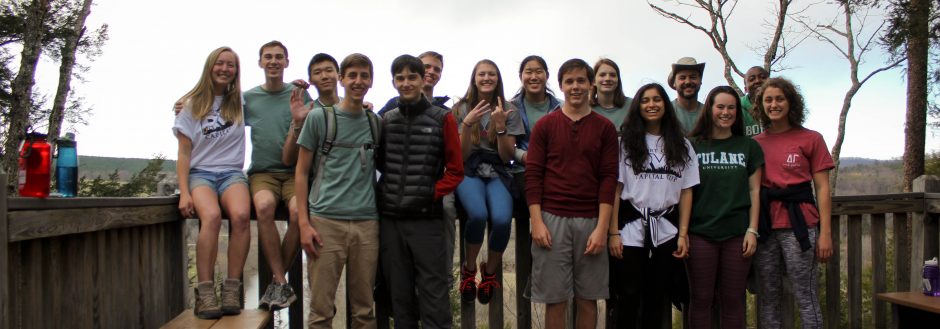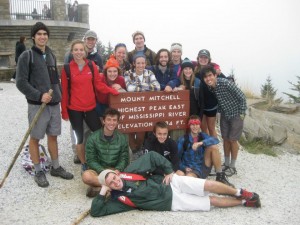As most of my fellow Earth Lodgers, I spent three hours volunteering for Sierra Club’s annual Environmental Film Festival on Saturday. The experience game me valuable insight into the local environmental advocacy community; insight that was honestly a bit disheartening.
Through working with GreenUR I have encountered the Sierra Club many times over the past year and a half. Our relationship is actually rather entangled, as almost all of GreenUR’s funding comes from the Sierra Club-run yard sale that happens at the end of the academic year. Because of our unique position outside of SOBAC, GreenUR is able to help various initiatives and events from clubs as wide ranging as SEEDS, The Roosevelt Institute, and Stop Hunger Now. Without the yard sale (and therefore without Sierra Club), we wouldn’t be able to fund any of these projects or any of our own. Despite this seemingly-intimate relationship, the yard sale’s timing disallows almost all UofR students from volunteering (it is held the week after graduation, where very few students are left on campus). This awkwardness has always held an unspoken tension between the two groups, as both realize it’s a little problematic but largely unsolvable. This year, GreenUR decided to amend this tension by volunteering at the Sierra Club’s other annual event: The Environmental Film Festival.
On Saturday morning I was driven over to The Byrd Theatre with ex-Earth Lodgers Shannon, Shelby, and Curly. We arrived to find John and Kevin already there, and were quickly joined by Jenni (who was taxied over by Jules). I was super excited to see so many familiar faces, impressed by how many Earth Lodgers were giving up a bit of their weekend. This excitement, however, quickly faded as I looked around the theatre lobby: yes, I saw a lot of familiar faces, but I also didn’t see any new ones. Despite arriving in between two films, there was virtually no traffic through the theatre – the seats inside, almost completely empty.
Shelby approached the woman in charge to let her know we had arrived (a woman we’ve been in continual contact with over the last month), and the women excitedly introduced herself – not realizing we’d already met. After realizing who we were, she assigned us to various tasks around the theatre (tabling upstairs, handing out programs, encouraging people to submit to the raffle). After a few minutes we all realized that there simply weren’t enough people in the theatre to occupy us all, and we asked if there was something more productive we could help with. We were then given petition-filled clipboards and sent outside – We were supposed to be encouraging people to sign onto these prefilled letters to Obama, encouraging him to “toughen up his act” and to “make American a leader in regard to climate change”.
Now don’t get me wrong, I’m totally all about the cause we were pushing, I just felt uncomfortable with the way it was going about. Our only training was something along the lines of, “So Obama needs to be a leader, but he won’t do so without grassroots support. Go get as many people to sign this petition. Oh, and don’t forget to encourage them to come to the huge protest next week – You know about that, right?” Basically I felt like I was entirely unqualified to explain to people why the petition was important or even ethical. I also don’t think signing a petition is particularly educational or productive – especially when there’s an educational film festival going on in an empty theatre! Shelby and I spent the next two hours trying to get people off the street to go see a movie – obviously most passerbys had plans or weren’t interested. Upon going back inside when we were done, we were praised for getting petitions signed (mostly by people who needed a way to justify not going to the festival itself). I couldn’t help but feel a little bad.
Through talking with the Sierra Club members I know the Film Festival took a LOT of work. There were many incredible films showing that covered a diverse range of relevant topics. But all this work doesn’t go anywhere if no one attends. I just felt bad seeing the boxes of paper programs, raffle cards, and petitions, all printed for no reason. Yes, we had succeeded in gathering a strong group of volunteers, but GreenUR hadn’t been involved until it was too late to make a difference. It just made me realize how little communication and collaboration we are actually doing with the environmental community outside of UofR. One of the woman in charge speculated that the poor turnout was due to VCU having an environmental film festival that same weekend. I couldn’t help but be confounded that that hadn’t been considered. I also had to wonder: why is that we were all willing to hop onto the bandwagon after it was done, but unwilling to help in the festival’s development or marketing? Why is that I was so unaware of the Sierra Club’s various campaigns and affiliate protests?
I guess all in all it was a valuable experience. It was a sort of wake-up call. At the end of the day we are all in the same community, fighting for a cause that affects all of us. So why is there such a lack of continuity? Yes, we all say “solidarity” and mean it – but we’re not actually collaborating. Hopefully this will change. Sierra Club now has their meeting in Jepson, and we realized it’s too silly for us not to attend. There will also be a large group of us going next weekend to the Keystone XL protest in DC. Between the two I think the ball will get rolling.
I went because I recognized that GreenUR (and a lot of other campus initiatives) is dependent upon the Sierra Club financially. But I left realizing that we are tied much more intimately than that. As we’ve been talking about with watersheds, we are connected through our environment and our environment’s health. The protection of this link, however, relies on us working together as One.


